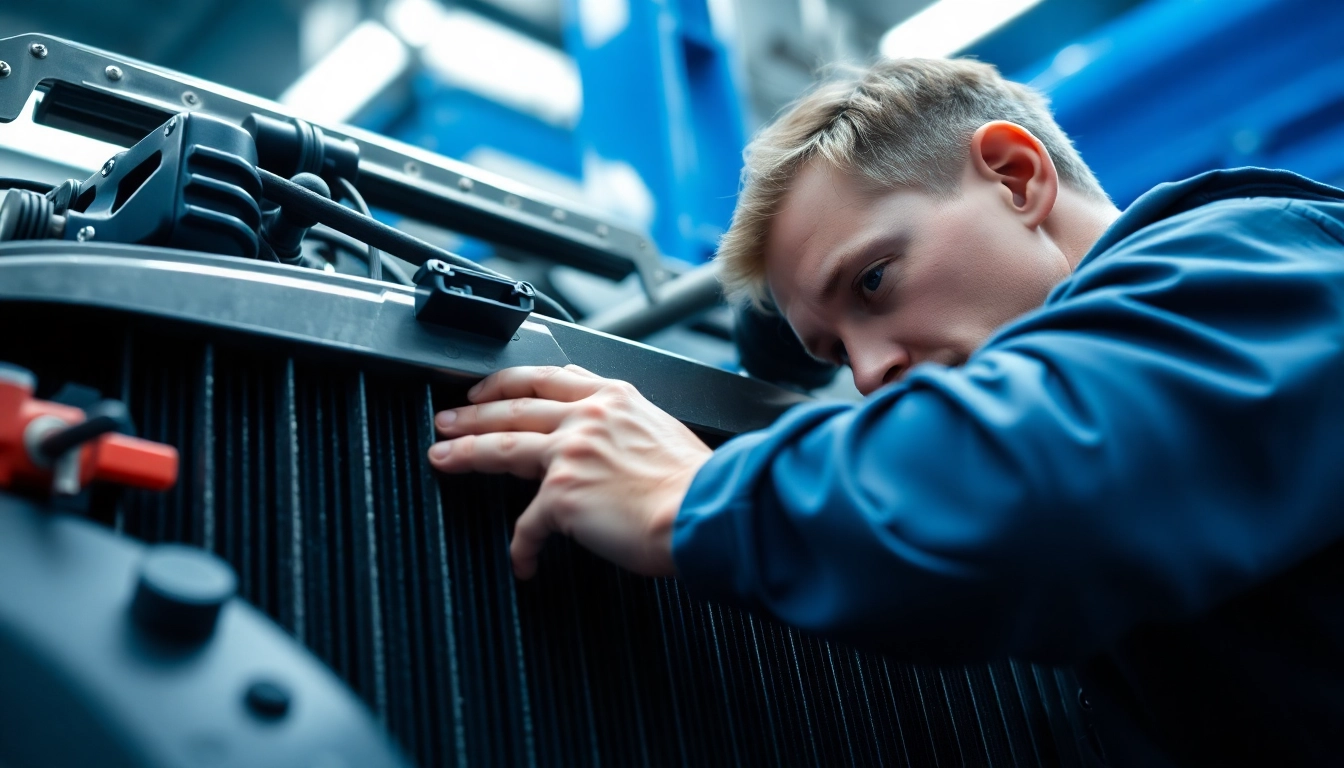Understanding Radiator and Air Conditioning Systems in Trucks
When it comes to keeping your truck running smoothly, understanding the components of its cooling and air conditioning systems is crucial. The radiator and air conditioning (A/C) systems play significant roles in maintaining optimal truck performance and driver comfort. From cooling the engine to ensuring a comfortable cabin environment, these systems must operate effectively. Any issues with these systems can lead to severe problems that may compromise the functionality of your truck. Our guide will cover essential insights on radiator and air conditioning repair for trucks, common issues that may arise, how to troubleshoot, the importance of regular maintenance, and how to choose the right repair services.
How Truck Cooling Systems Operate
The radiator is a key component of a truck’s cooling system, responsible for regulating the engine temperature. The coolant circulates through the engine and absorbs heat, which is then transferred to the radiator. Inside the radiator, this heat is released into the air, allowing the coolant to cool down before it cycles back into the engine. Proper airflow through the radiator fins is critical; hence, the truck’s movement or the operation of electric fans is necessary for effective cooling.
In addition to cooling the engine, the A/C system in trucks works to regulate the temperature inside the cabin. It consists of several components, including the compressor, condenser, expansion valve, and evaporator. When the A/C is activated, refrigerant circulates between these components, absorbing heat from the cabin and expelling it outside, thus keeping the interior comfortable for passengers and drivers alike.
Signs Your Radiator Needs Repair
Recognizing the signs that your truck’s radiator may need repair is essential for preventing costly engine damage. Some common indicators include:
- Overheating Engine: If your engine temperature gauge frequently rises into the red zone, this could signal a radiator issue.
- Coolant Leaks: Puddles or spots of coolant beneath your truck, often green or orange, can indicate leaks.
- Discolored Fluid: If your coolant appears rusty or dirty, it may point towards corrosion or contamination.
- Unpleasant Odors: A sweet scent inside the cabin may signal coolant leaks.
The Role of Air Conditioning in Truck Performance
The air conditioning system not only provides comfort to the driver and passengers but also affects overall truck performance. A malfunctioning A/C can lead to higher temperatures inside the cabin, distracting the driver and impacting their ability to operate the vehicle safely. Moreover, a properly functioning A/C system helps regulate engine temperatures, as it takes the load off the engine’s work, especially during extreme weather conditions. Regular maintenance of your A/C system ensures it operates efficiently, which can ultimately save on fuel costs.
Common Issues with Radiators and Air Conditioning
Identifying Radiator Leaks and Failures
Radiator leaks can be subtle and may go unnoticed until they’ve caused significant damage. Regular inspections can help identify leaks early. Key areas to check include:
- Hoses: Inspect all hoses for cracks or signs of wear.
- Connections: Ensure all clamps are secure and connections are tight.
- Radiator Core: Look for damage or corrosion on the radiator itself.
Common A/C Problems in Trucks and Their Solutions
Several issues can arise with truck A/C systems, including:
- Insufficient Cooling: This might be due to low refrigerant levels, a blocked condenser, or a malfunctioning compressor.
- Noisy Operation: Unusual noises often signal a problem with the compressor or a loose component.
- Unpleasant Odors: Bad smells can result from mold buildup in the evaporator or debris in the A/C system.
Impact of Poor Cooling on Truck Performance
Poorly functioning cooling systems can lead to severe consequences. Overheating can cause engine components to warp or fail, leading to extensive and costly repairs. Similarly, inadequate A/C performance can distract drivers and reduce their comfort, particularly on long hauls, potentially increasing fatigue and decreasing safety on the road. Regular maintenance can mitigate these risks and prolong the lifespan of both the radiator and A/C systems.
DIY Troubleshooting Tips for Truck Cooling Systems
Basic Inspection Techniques for Radiators
Before setting out to visit a repair shop, it’s beneficial to perform a quick self-check of your radiator. Some simple techniques include:
- Checking the coolant level in the reservoir and radiator.
- Examining hoses for leaks, cracks, or bulges.
- Inspecting the radiator for signs of corrosion.
How to Check Your Truck’s A/C Functionality
To ensure your truck’s A/C system is functioning properly, perform the following checks:
- Turn on the A/C and observe if cold air is produced.
- Check for any unusual noises coming from the A/C unit when it’s running.
- Inspect the cabin air filter for clogs that may impede airflow.
When to Seek Professional Help
If you encounter any of the signs discussed earlier or if the DIY inspections reveal potential issues, it may be time to consult a professional. Additionally, if you lack the tools or experience to adequately diagnose issues, leaving it to a certified technician ensures proper care for your vehicle.
The Importance of Regular Maintenance
Scheduled Maintenance for Radiator and A/C Systems
Establishing a regular maintenance schedule is crucial for both radiator and A/C systems. This includes:
- Regularly inspecting coolant levels and topping off as necessary.
- Changing coolant as recommended by the truck manufacturer.
- Keeping the A/C system serviced to check for refrigerant leaks and component functionality.
Cost-Effective Maintenance Strategies
To ensure your radiator and A/C systems remain in optimal condition without breaking the bank, consider the following cost-effective strategies:
- Perform visual inspections regularly to catch problems early.
- Follow the manufacturer’s recommendations for service intervals.
- Utilize preventive measures such as keeping the cooling system clean and operating at optimal levels.
Benefits of Preventative Care for Performance
Preventative maintenance can yield numerous benefits, including:
- Enhanced performance of the truck’s engine and cooling systems.
- Increased fuel efficiency as the engine operates more efficiently.
- Extended lifespan of components, reducing the likelihood of costly repairs.
Choosing the Right Repair Services
What to Look for in a Repair Shop
Selecting a reputable repair shop is essential for quality service. Key factors to consider include:
- Certifications: Choose shops with ASE-certified technicians.
- Reviews: Look for customer testimonials and ratings on platforms like Yelp or Google.
- Warranty on Services: Ensure that the shop offers warranties on both parts and labor.
Questions to Ask Your Technician
Before leaving your truck at a repair shop, it’s important to ask the right questions, such as:
- What are the estimated costs for repairs, including parts and labor?
- How long will the repairs take?
- Will you provide a detailed report on what was repaired and why?
Comparing Costs for Radiator and A/C Repair
Costs for radiator and air conditioning repairs can vary widely depending on the issue, type of truck, and local rates. On average, radiator repair can cost anywhere from $100 to several hundred dollars, especially depending on the severity of the problem. For A/C repairs, costs can range significantly as well, with major components like compressors and evaporators representing the higher end of the repair spectrum. Always seek estimates from multiple shops to ensure you receive fair pricing.



